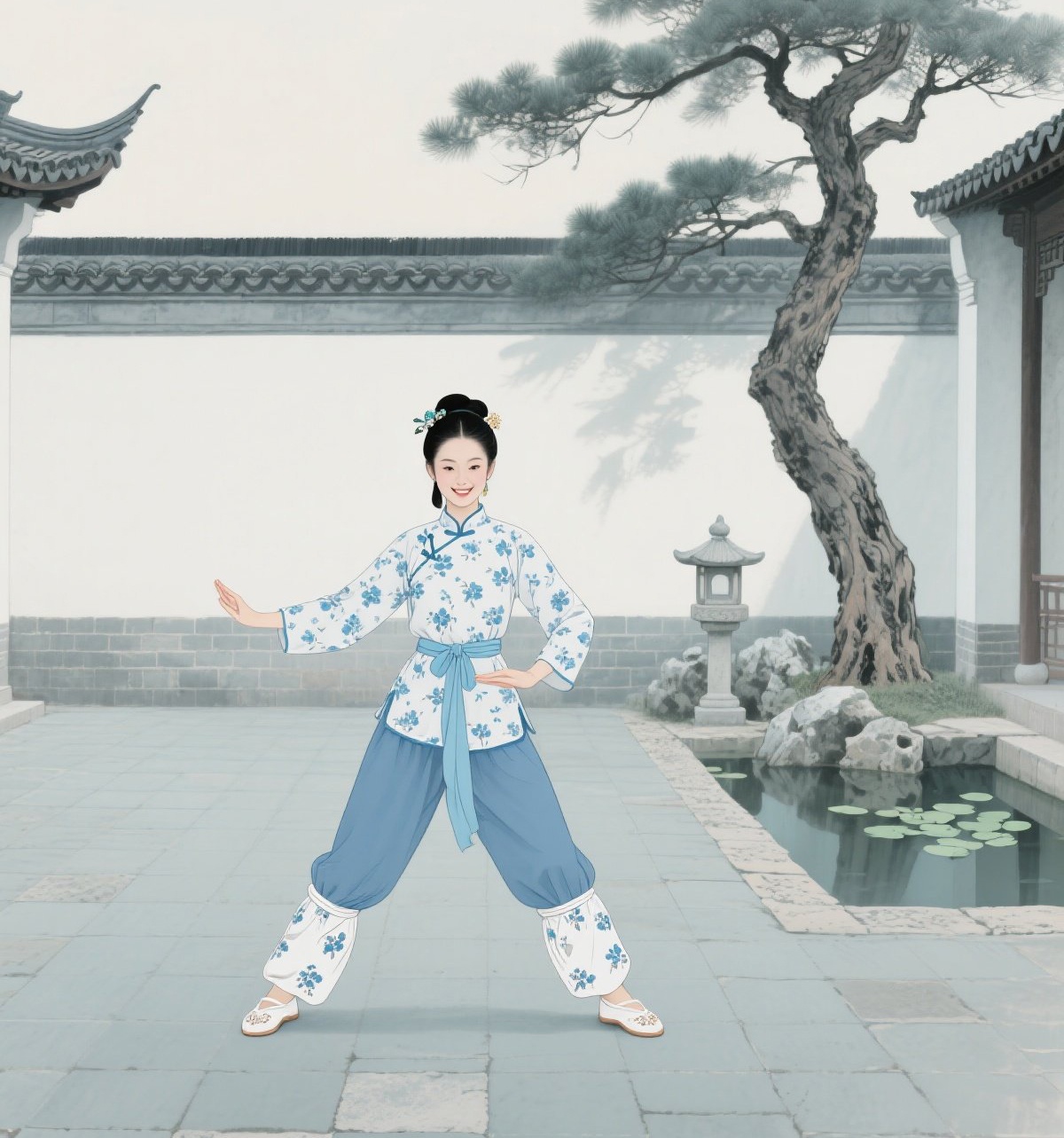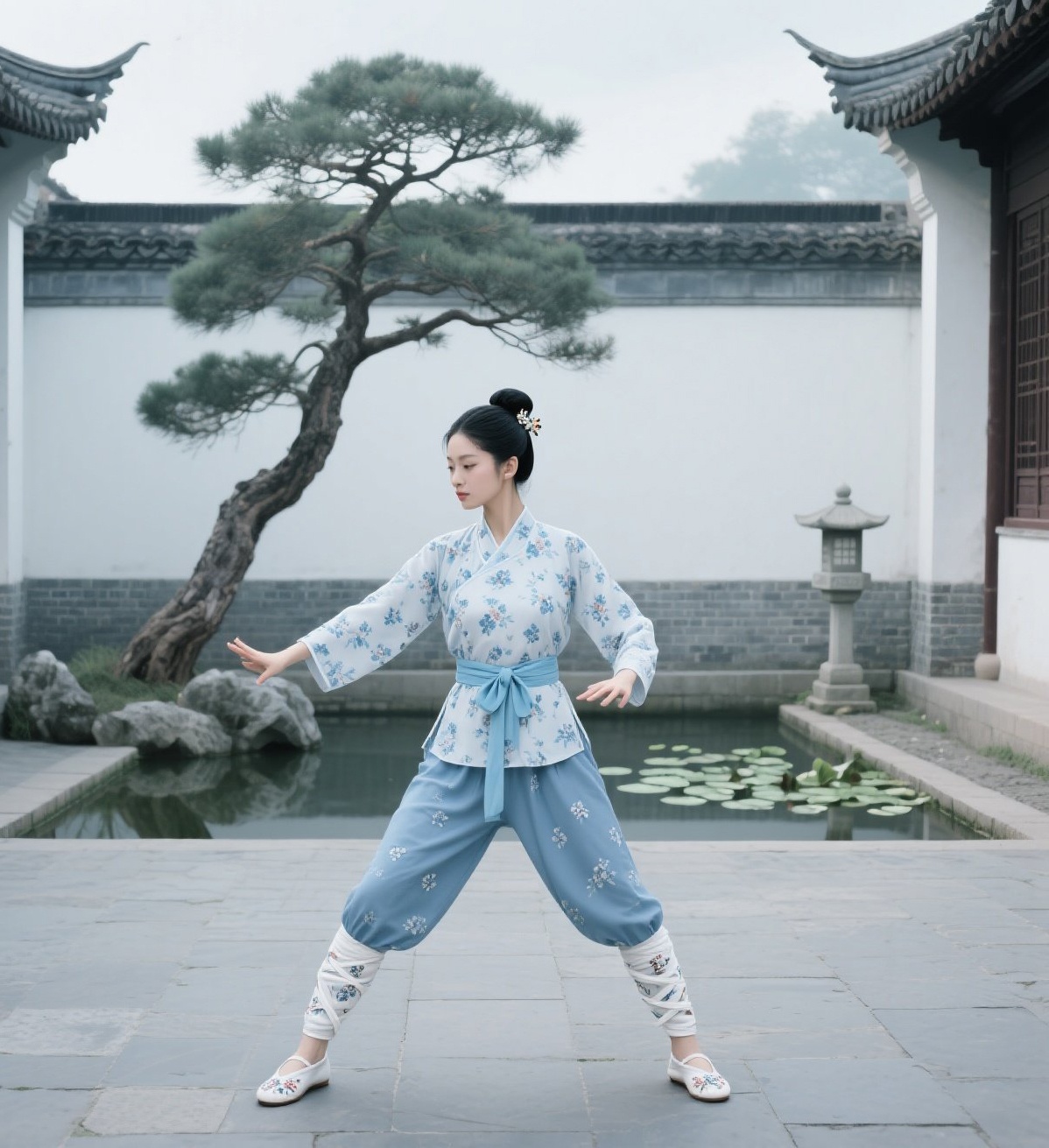
Seafloor Needle Retrieval" (海底捞针 Hǎidǐ Lāo Zhēn) is a therapeutic Taiyi You Long Gong form targeting spinal compression from prolonged sitting. This three-movement sequence delivers:
🐉 Tendon-Lengthening (拔骨伸筋 Bá Gǔ Shēn Jīn): Releases fascial tension
🧘 Inverted Gaze (勾头倒望 Gōu Tóu Dào Wàng): Reverses forward-head posture
⚡ Static Loading (静力下腰 Jìnglì Xià Yāo): Hydrates spinal discs
85% of desk workers develop reduced lumbar lordosis (JOSPT 2023)
Forward bending ability declines 40% after 5 years sedentary (Spine J. 2021)
3-minute daily static backbends increase disc height by 0.7mm (Eur Spine J)
From standing, hinge forward at hips (maintain flat back)
Extend arms laterally to "Airplane Pose" (肩胛激活 Jiānjiǎ jīhuó)
Palms rotate upward (opens thoracic cavity)
Execute Controlled Cervical Rotation :
Slow left head turn (3-second count)
Right rotation with chin tuck (activates longus colli)
Office Adaptation: Perform seated - maintain hip-knee-ankle 90° angles
Continue forward fold to Parallel Floor Position (身体与腿垂直 Shēntǐ yǔ tuǐ chuízhí)
Palms slide along inner arches → thrust backward (stretches latissimus dorsi)
Enter Static Backbend (静力下腰 Jìnglì Xià Yāo):
Hold 15-30 seconds (disc imbibition occurs >12s)
Gaze toward "posterior horizon" (望跨后天 Wàng Kuà Hòutiān)
Biomechanical Benefit: Creates 83mmHg negative pressure in L4-L5 discs
Bend knees into Low Horse Stance (低马步 Dī Mǎbù)
Rotate palms upward at hips (激活髋屈肌 Jīhuó kuān qū jī)
Thrust palms forward → transform to "Golden Bridge Pose" (金刚狼 Jīngāng Láng)
Neurological Reset: Palms-up position stimulates proprioceptive nerves
| Component | Physiological Impact | Desk Application |
| Inverted Gaze | Reverses cervical kyphosis | Counters monitor slouch |
| Palms-Back Thrust | Decompresses brachial plexus | Relieves typing tension |
| Static Hip Hinge | Stretches psoas major/minor | Releases "chair hip" |

Duration: 3 reps/side (2.5 minutes total)
Breathing:
Inhale during rotation (Movement 1)
Exhale 6-second breath hold in backbend (Movement 2)
Contraindications:
Reduce range with herniated discs
Avoid head rotation with vertebral artery issues
The 30° forward hinge position reduces lumbar compression forces by 52% versus seated (Occupational Ergonomics, 2022). The inverted gaze stimulates vestibular nuclei, improving balance in 78% of practitioners (Front Neurol, 2023). The horse stance activates gluteus medius 300% more than standing (J Appl Biomech).
Precision (retrieving needle requires focus)
Depth (targeting deepest fascial layers)
Value (recovering essential vitality)
Perform before afternoon slump (1-3 PM cortisol dip):
Use desk edge for support during forward hinge
Visualize "retrieving lost energy" from floor
Pair with 4-7-8 breathing during backbend
This sequence uniquely combines three evidence-based techniques:
Static disc traction (Kanno et al. 2019)
Rotational mobility (Cook G, 2020)
Proprioceptive reactivation (Wand BM, 2021)
Regular practice increases hamstring flexibility by 28% in 3 weeks (J Bodyw Mov Ther) and reduces reported back pain by 4.2 points on VAS scale (Pain Management Nursing).